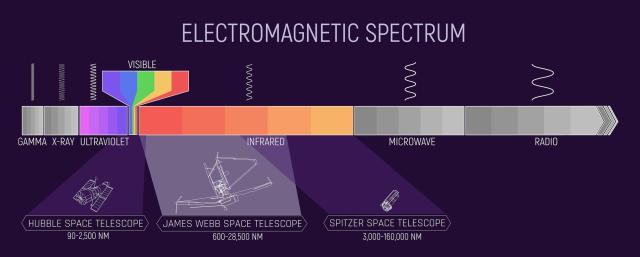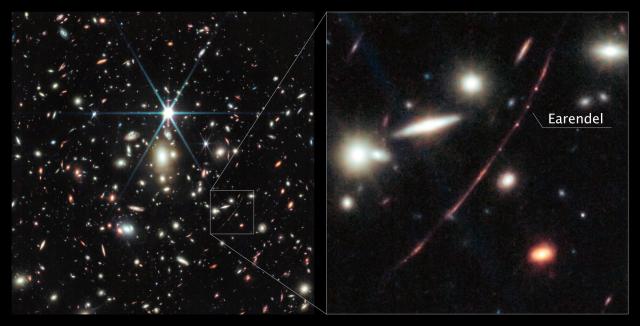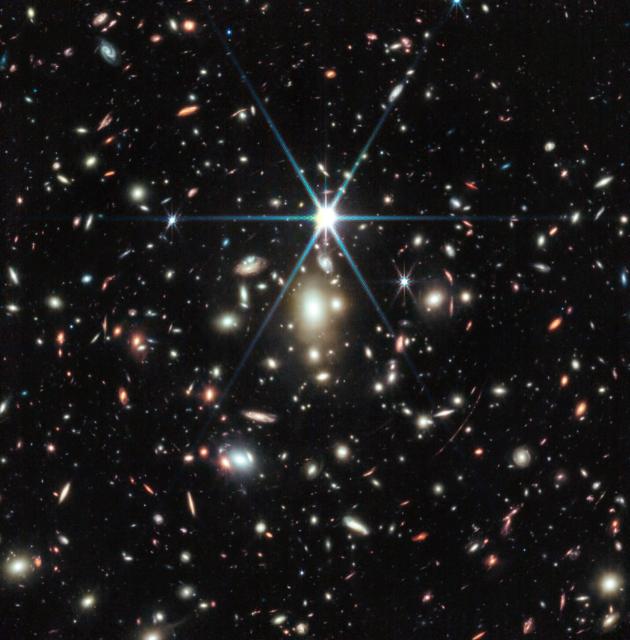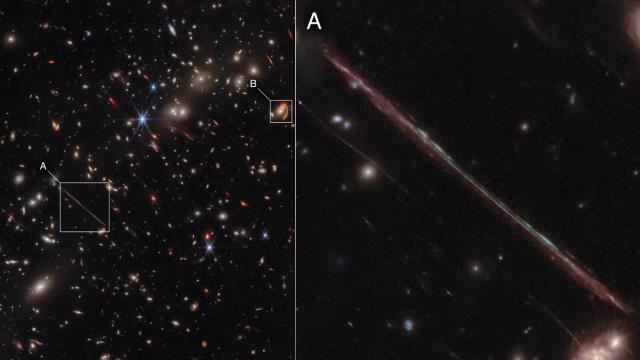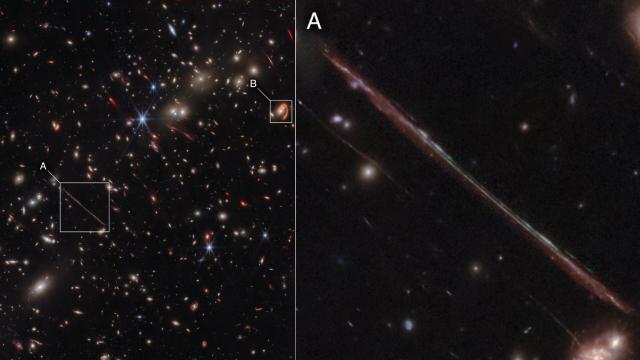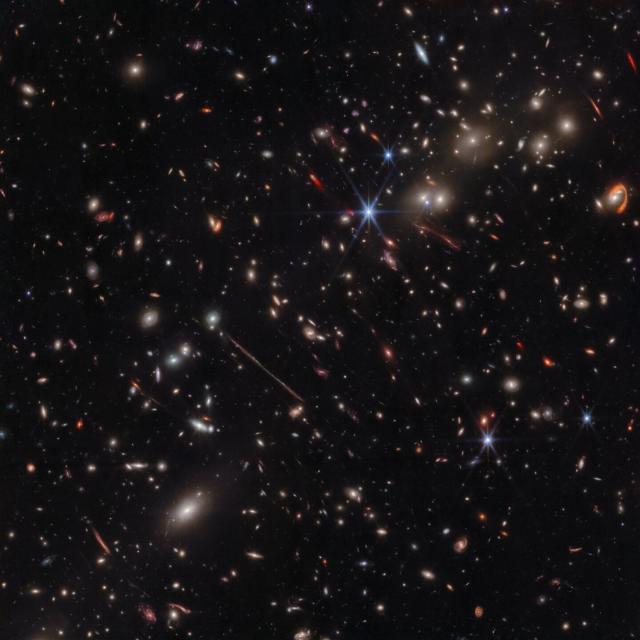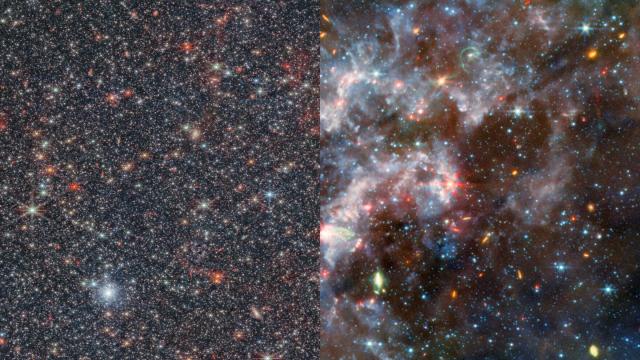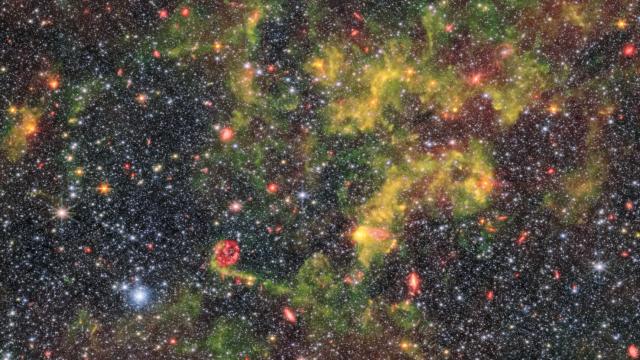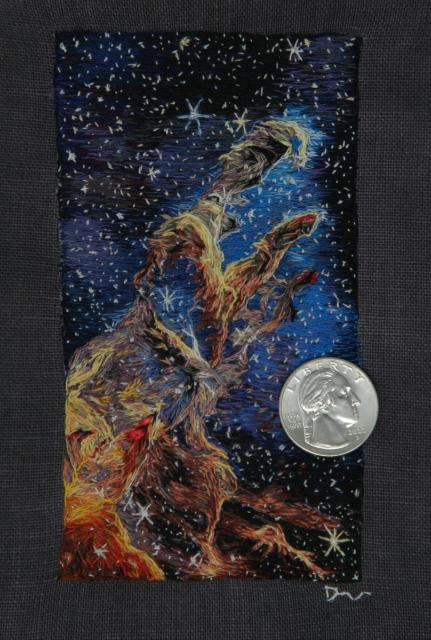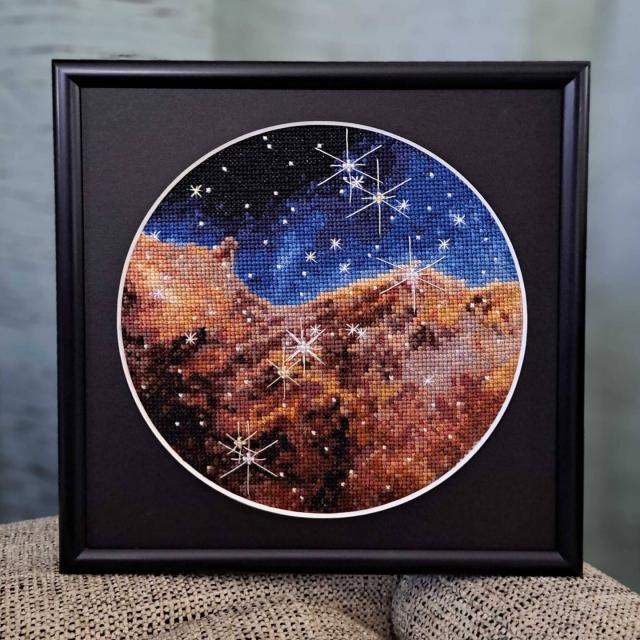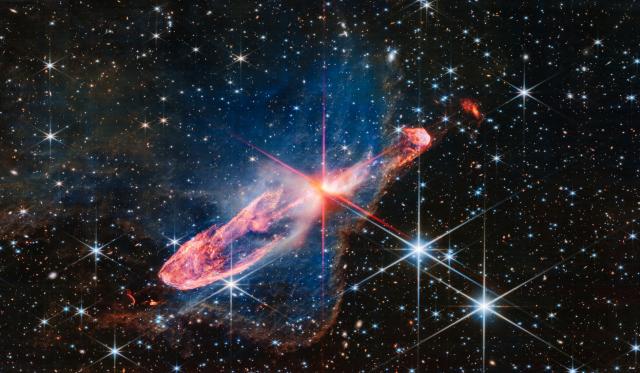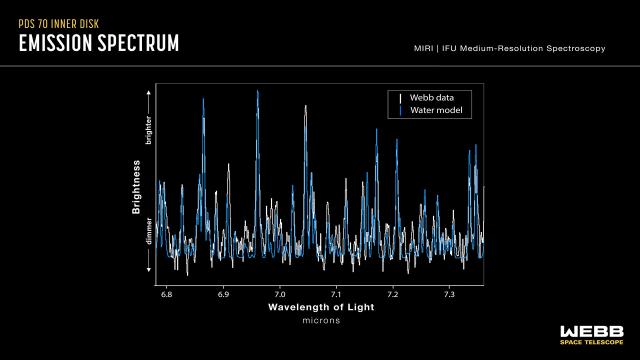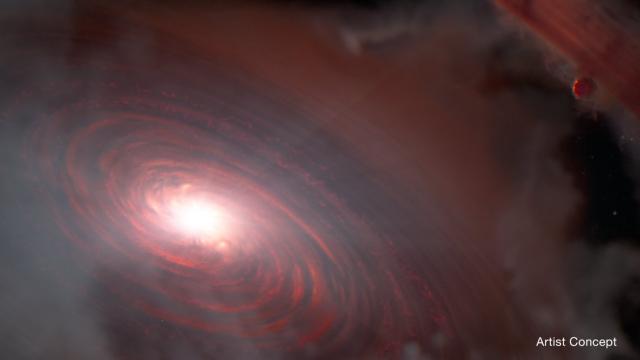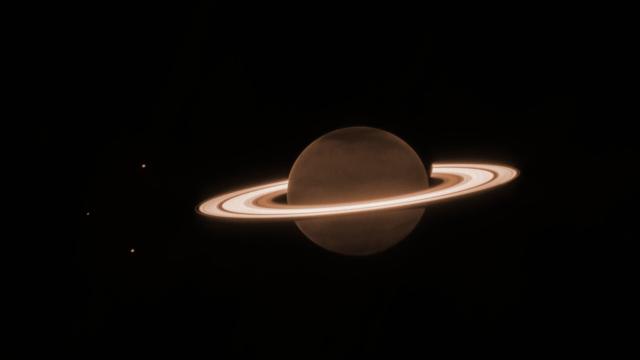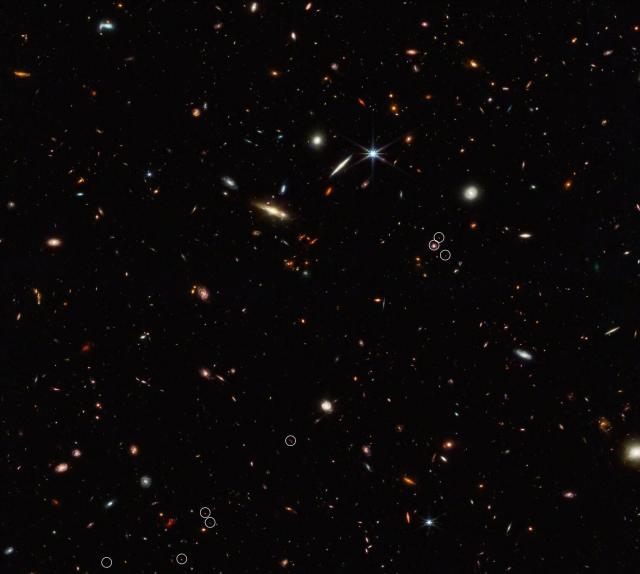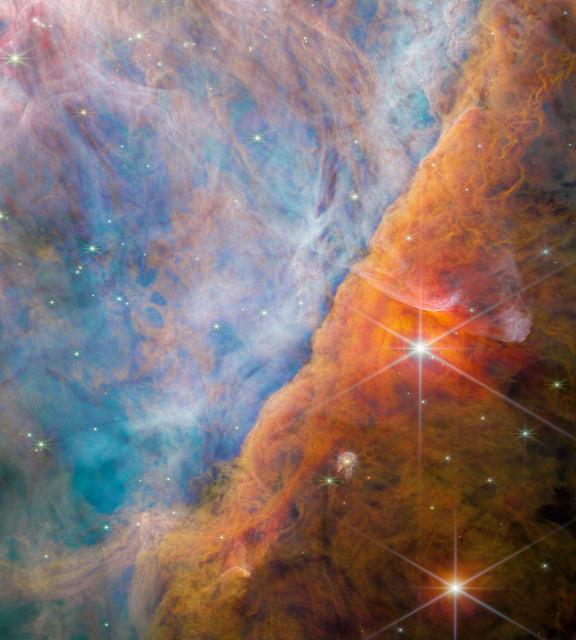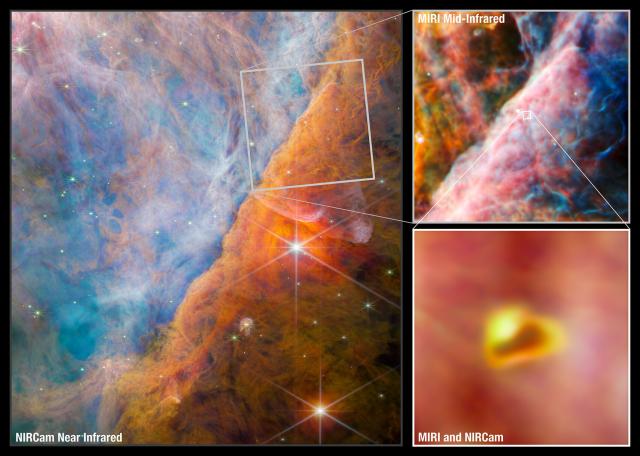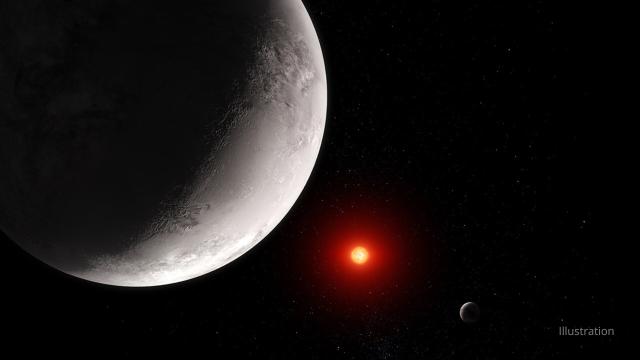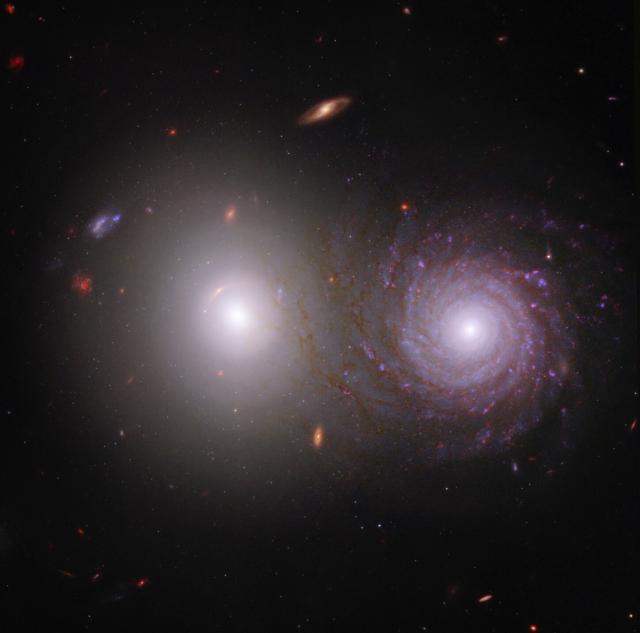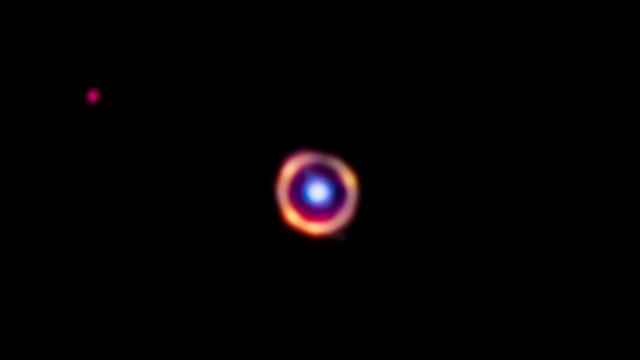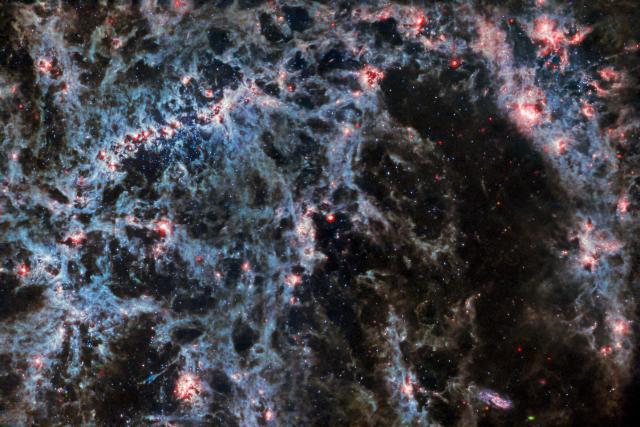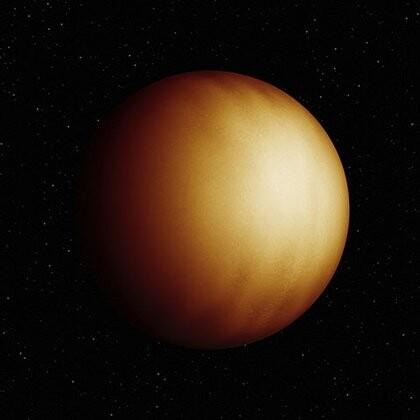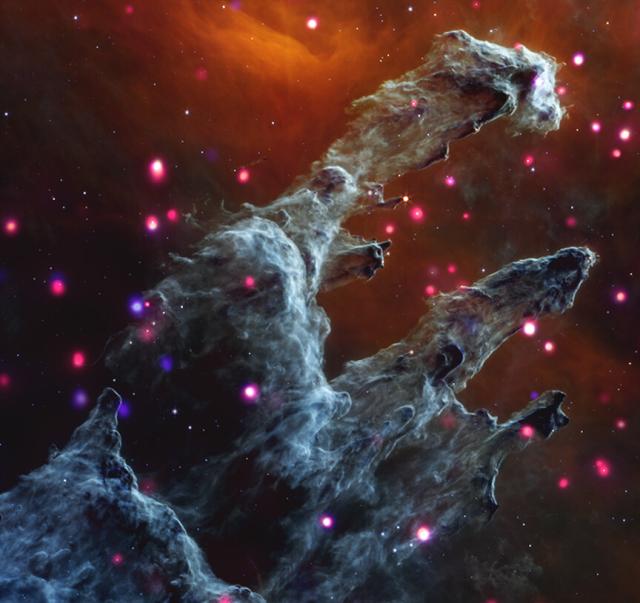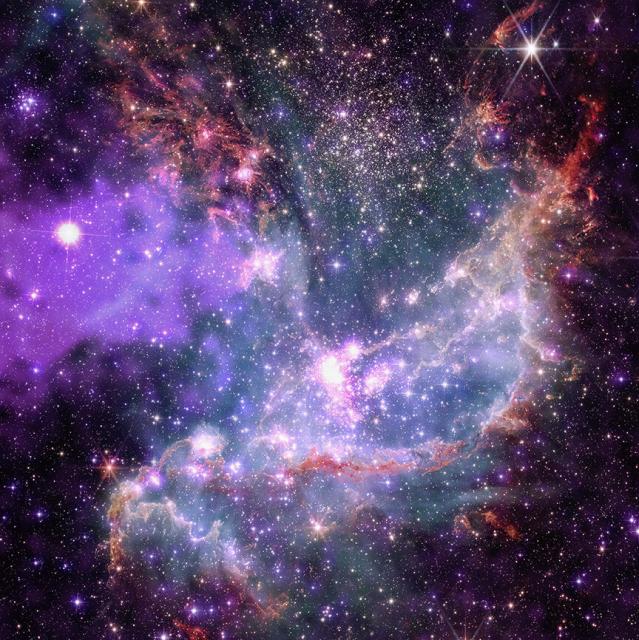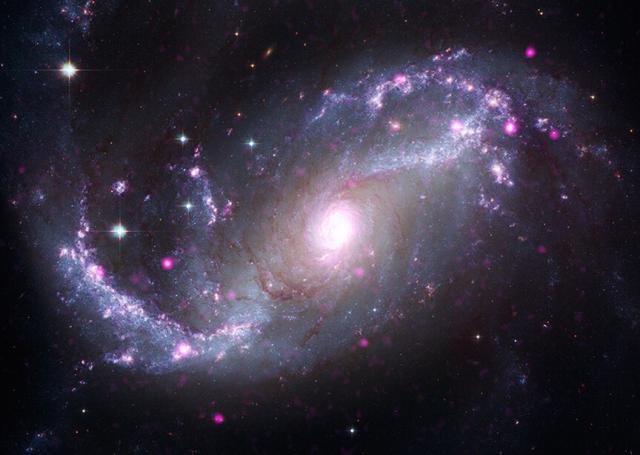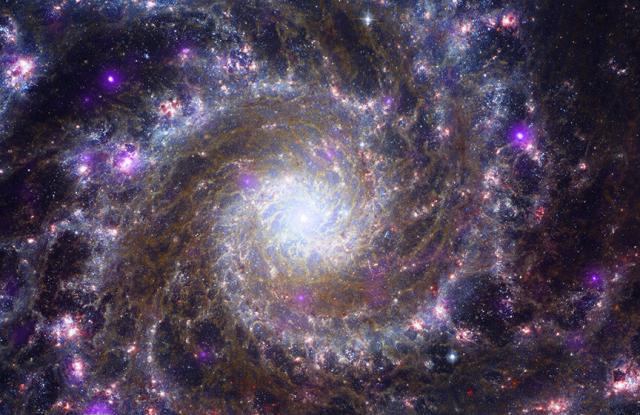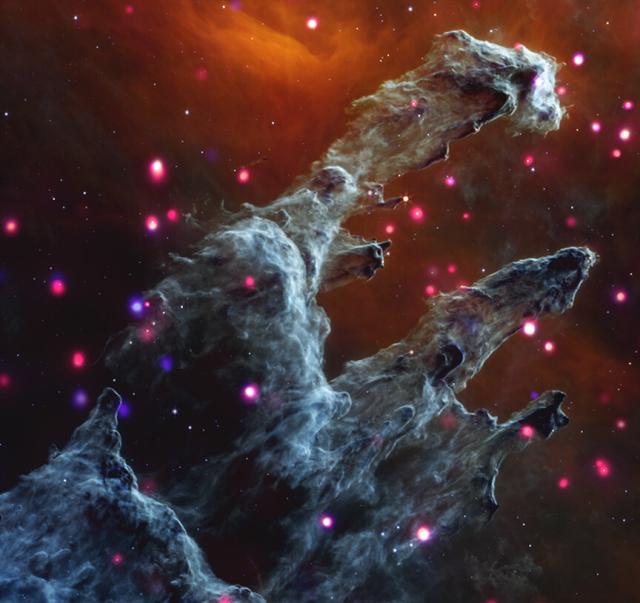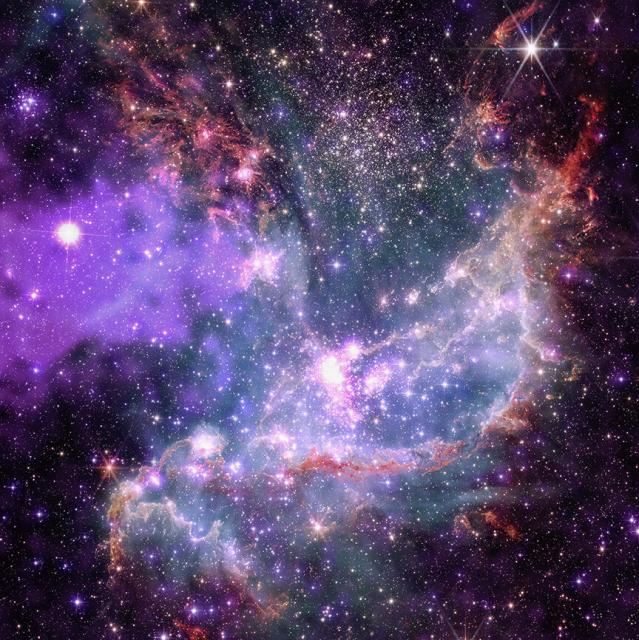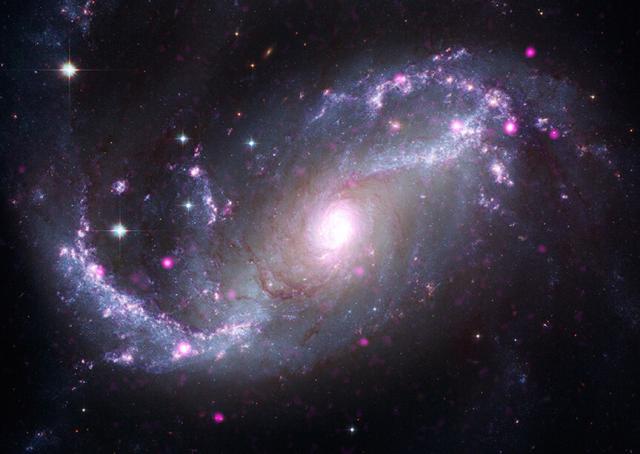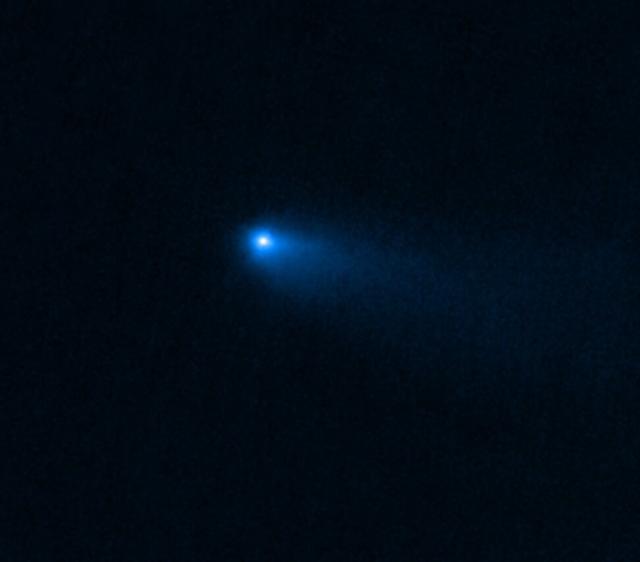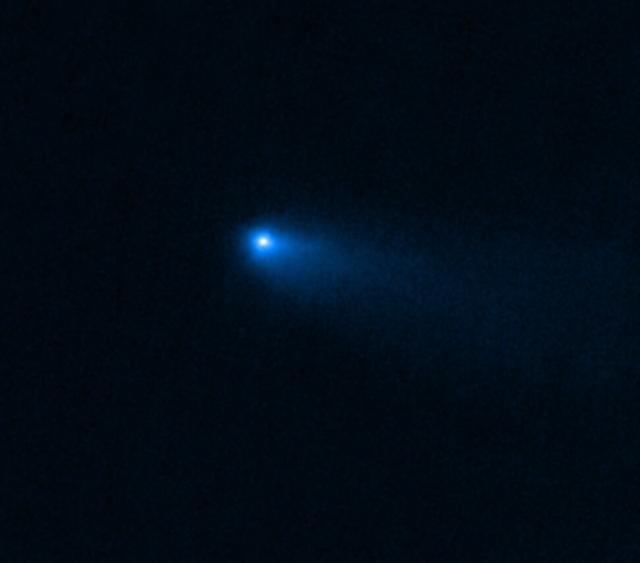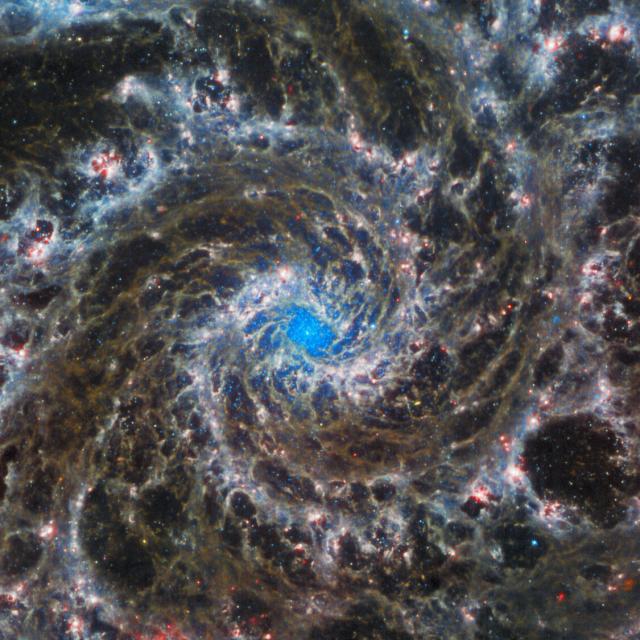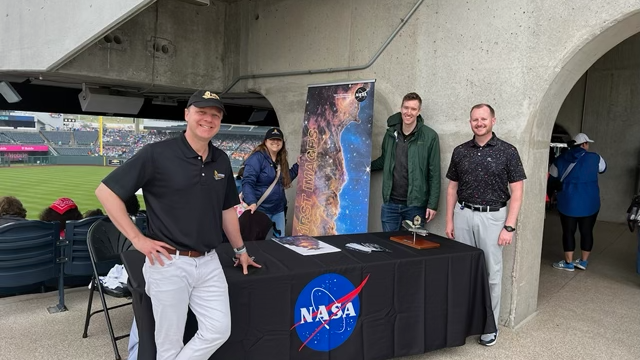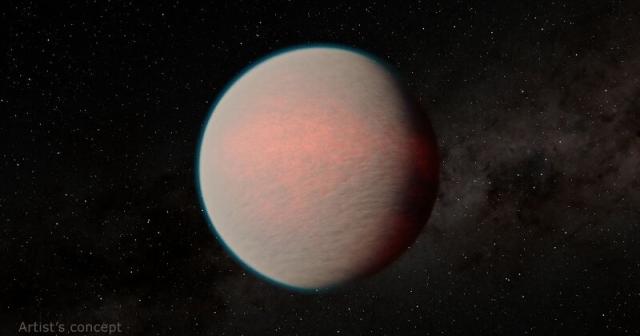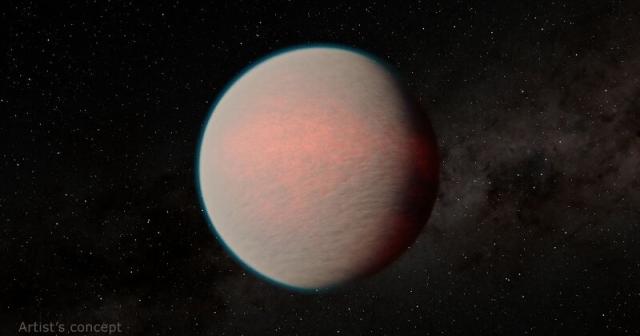Search
Items tagged with: jameswebb
Mid-infrared!
Webb sees in near-infrared and mid-infrared wavelengths — invisible light that we feel as heat. This allows the telescope to peer back in time at the early universe, look through dust clouds to see stars being born, and more: spaceplace.nasa.gov/james-webb…
#JamesWebb
What Is the James Webb Space Telescope? | NASA Space Place – NASA Science for Kids
The James Webb Space Telescope is the largest, most powerful space telescope ever built.spaceplace.nasa.gov
The light of Earendel, our most beloved star ⭐
Discovered by @NASAHubble, Earendel is the farthest star ever detected. Webb’s fresh look reveals it to be a massive B-type star more than twice as hot and about a million times more luminous than our Sun: go.nasa.gov/3Os44aC
#JamesWebb
Webb Reveals Colors of Earendel, Most Distant Star Ever Detected
NASA’s James Webb Space Telescope has followed up on observations by the Hubble Space Telescope of the farthest star ever detected in the very distant universe, within the first billion years after the big bang.Isabelle Yan (NASA)
#JamesWebb
#JamesWebb
#JamesWebb
Youths!
Webb observed galaxy cluster El Gordo, a cosmic teen that existed 6.2 billion years after the big bang. The most massive cluster of its era, it’s a perfect gravitational magnifying glass, bending & distorting light from distant objects behind it: go.nasa.gov/3YkoBCp
#JamesWebb
Webb Spotlights Gravitational Arcs in ‘El Gordo’ Galaxy Cluster
A new image of the galaxy cluster known as “El Gordo” is revealing distant and dusty objects never seen before, and providing a bounty of fresh science.Isabelle Yan (NASA)
#JamesWebb
#JamesWebb
Youths!
Webb observed galaxy cluster El Gordo, a cosmic teen that existed 6.2 million years after the big bang. The most massive cluster of its era, it’s a perfect gravitational magnifying glass, bending & distorting light from distant objects behind it: go.nasa.gov/3DDfSBF
#JamesWebb
Webb Spotlights Gravitational Arcs in ‘El Gordo’ Galaxy Cluster
A new image of the galaxy cluster known as “El Gordo” is revealing distant and dusty objects never seen before, and providing a bounty of fresh science.Isabelle Yan (NASA)
#JamesWebb
Space isn’t always metal.
NGC 6822, a galactic neighbor captured by Webb, has unusually low metallicity, meaning it doesn’t have much in the way of elements heavier than hydrogen and helium. This image combines Webb’s views in near and mid-infrared light: esawebb.org/images/potm2307a/
#JamesWebb
Does the vastness of space fill you with existential...thread? 🧵
This #WorldEmbroideryDay, check out some crafty creations inspired by imagery from the Webb telescope and other NASA missions: nasa.tumblr.com/post/724104529…
#JamesWebb
NASA Inspires Your Crafty Creations for World Embroidery Day
It’s amazing what you can do with a little needle and thread! For #WorldEmbroideryDay, we asked what NASA imagery inspired you. You responded with a variety of embroidered creations, highlighting our...nasa (Tumblr)
Going goblin mode.
Within the orange-white splotch at the center of this image are 2 chaotic baby stars. Over thousands of years, the pair repeatedly gobbled up, then spat out the gas and dust around them — producing those fiery orange lobes: go.nasa.gov/3OFJFjP
#JamesWebb
Webb Snaps Highly Detailed Infrared Image of Actively Forming Stars
NASA’s James Webb Space Telescope has captured the “antics” of a pair of actively forming young stars, known as Herbig-Haro 46/47, in high-resolution near-infrared light.Isabelle Yan (NASA)
#JamesWebb
On our world, water is life. But how did it get here? Are there similar environments around other stars?
Webb has us one step closer to answers. In a still-developing “solar system,” Webb detected water in the zone where rocky planets like Earth may form: go.nasa.gov/3O5LR2j
#JamesWebb
Webb Detects Water Vapor in Rocky Planet-Forming Zone
New measurements by NASA’s James Webb Space Telescope’s MIRI (Mid-Infrared Instrument) have detected water vapor in the system’s inner disk, at distances of less than 100 million miles (160 million kilometers) from the star – the region where rocky, …Jamie Adkins (NASA)
Of course Saturn brought its ring light 🪐
Webb took its first near-infrared look at Saturn on June 25. The planet appears dark at this wavelength, as methane gas in its atmosphere absorbs sunlight — but its icy rings stay bright! Learn more: go.nasa.gov/3XtQ5Fr
#JamesWebb
Cosmic Webb, meet cosmic web 🤝
Galaxies gather in clusters and threads stretching across the universe, punctuated by vast voids. Now Webb has discovered an early strand of this cosmic web — 10 galaxies that existed 830 million years after the big bang: go.nasa.gov/433qCnk
#JamesWebb
NASA’s Webb Identifies the Earliest Strands of the Cosmic Web
Astronomers using NASA’s James Webb Space Telescope have discovered a thread-like arrangement of 10 galaxies that existed just 830 million years after the big bang.Jessica Evans (NASA)
Webb — constantly raising the (Orion) Bar for us all.
While observing the Orion Bar, Webb made the first detection ever of a crucial carbon molecule in space. This molecule was found inside a planet-forming disk surrounding a young star system: go.nasa.gov/3NLiJyy
#JamesWebb
Webb Makes First Detection of Crucial Carbon Molecule
This molecule, never before seen in space, is believed to be a cornerstone of interstellar organic chemistry.Madison Olson (NASA)
#JamesWebb
Listen to the galaxies of Stephan’s Quintet sing! 🎶
This image, which combines infrared data from the Webb & Spitzer telescopes with X-ray data from @chandraxray, has been "translated" to sound to provide another way of experiencing the cosmos. More: chandra.si.edu/photo/2023/soni…
[Video embedded in original tweet]
#JamesWebb
#JamesWebb
Webb Rules Out Thick Carbon Dioxide Atmosphere for Rocky Exoplanet
Infrared measurements of TRAPPIST-1 c indicate that it is probably not as Venus-like as once imagined.Madison Olson (NASA)
#JamesWebb
Webb Rules Out Thick Carbon Dioxide Atmosphere for Rocky Exoplanet
Infrared measurements of TRAPPIST-1 c indicate that it is probably not as Venus-like as once imagined.Madison Olson (NASA)
Cosmic smoke & telescope mirrors?
Webb found complex organic molecules similar to smoke or smog in a galaxy more than 12 billion light-years from Earth. This sets a new record for the most distant detection of these big, complicated molecules: bit.ly/43M4YEG
#JamesWebb
Webb Telescope Detects Universe’s Most Distant Organic Molecules - Texas A&M Today
Texas A&M astronomer Justin Spilker and collaborators have found complex organic molecules in a galaxy more than 12 billion light-years away from Earth.Caitlin Clark (Texas A&M Today)
Webb’s looked at galaxies from both sides now…
From dust structures in mid-infrared light to stars in near-infrared light, Webb’s dual vision is helping us to see star-forming regions — such as galaxy NGC 5068 — as never before: bit.ly/42jAp8f
#JamesWebb
#JamesWebb
hot exoplanet summer! 🔥
Webb analyzed the atmosphere of an ultrahot gas giant and mapped its temperatures. Despite scorching heat (nearly 5000 F or 2700 C), WASP-18 b has small amounts of atmospheric water — precisely measured due to Webb's sensitivity: go.nasa.gov/3C0UuWq
#JamesWebb
Discovery Alert: Webb Maps and Finds Traces of Water in an Ultra-hot Gas Giant's Atmosphere
Scientists used the Webb Telescope identified water vapor in the atmosphere of WASP-18 b, and made a temperature map of the planet as it slipped behind, and reappeared from, its star.Exoplanet Exploration: Planets Beyond our Solar System
Daily hydration reminder 💧
Webb spotted a massive water emission from Saturn's moon Enceladus, spanning over 6000 miles and gushing out at 79 gallons per second. (Webb's data shows Enceladus as a white pixel. Compare its size to the water jet below!) go.nasa.gov/42fQbkK
#JamesWebb
Webb Maps Large Plume Jetting From Saturn’s Moon Enceladus
A water vapor plume from Saturn’s moon Enceladus spanning more than 6,000 miles – nearly the distance from Los Angeles, California to Buenos Aires, Argentina – has been detected by researchers using NASA’s James Webb Space Telescope.Jamie Adkins (NASA)
Don't forget to water your planets 🪐
Webb provides new insight into how Enceladus' plumes act as a sprinkler system. The moon leaves a “donut” (torus) of water around Saturn as it orbits. About 30% of the water stays in that “donut." The rest is supplied to Saturn & its rings!
#JamesWebb
I could be brown, I could be blue, I could be violet sky…
Webb, @chandraxray, @NASAHubble and other telescopes contributed to these stunning composite images of star cluster NGC 346, spiral galaxies NGC 1672 & M74, and the Pillars of Creation: s.si.edu/chandrawebb2
#JamesWebb
I could be brown, I could be blue, I could be violet sky…
Webb, @chandraxray, @NASAHubble and other telescopes contributed to these stunning composite images of star cluster NGC 346, spiral galaxies NGC 1672 & M74, and the Pillars of Creation: s.si.edu/chandrawebb2
#JamesWebb
#JamesWebb
Com-et me, bro. ☄️
Webb confirmed the 1st detection of water vapor around a rare type of comet in the main asteroid belt. This suggests that ice from the early solar system can be preserved there—a breakthrough for studying the origins of water on Earth: go.nasa.gov/3BucEzm
#JamesWebb
NASA’s Webb Finds Water, and a New Mystery, in Rare Main Belt Comet
Using Webb’s NIRSpec (Near-Infrared Spectrograph) instrument, astronomers have confirmed gas – specifically water vapor – around a comet in the main asteroid belt for the first time, indicating that water ice from the primordial solar system can be p…Jessica Evans (NASA)
Com-et me, bro. ☄️
Webb confirmed the 1st detection of water vapor around a rare type of comet in the main asteroid belt. This suggests that ice from the early solar system can be preserved there—a breakthrough for studying the origins of water on Earth: go.nasa.gov/3BucEzm
#JamesWebb
NASA’s Webb Finds Water, and a New Mystery, in Rare Main Belt Comet
Using Webb’s NIRSpec (Near-Infrared Spectrograph) instrument, astronomers have confirmed gas – specifically water vapor – around a comet in the main asteroid belt for the first time, indicating that water ice from the primordial solar system can be p…Jessica Evans (NASA)
“Mother of Hubble,” friend of Webb. 💐
We’re honored that Dr. Nancy Grace Roman visited the Webb Telescope at @NASAGoddard in 2017. Here she is shown with our Operations Project Scientist, Dr. Jane Rigby.
#JamesWebb
#JamesWebb
Exoplanets, galaxies, black holes, oh my!
Curious to see what areas of astronomy Webb will cover in year 2? Find a comprehensive list of the approved science programs here: bit.ly/42xhVSG
#JamesWebb
Not just out of the park, but out of this world!
Our team participated at the @Royals’ “School Day at The K,” talking to thousands of local students from the Kansas City area about Webb science & engineering.
#JamesWebb
#JamesWebb
NASA’s Webb Takes Closest Look Yet at Mysterious Planet
A science team gains new insight into the atmosphere of a “mini-Neptune,” a class of planet common in the galaxy but about which little is known.NASA Jet Propulsion Laboratory (JPL)
#JamesWebb
NASA’s Webb Takes Closest Look Yet at Mysterious Planet
A science team gains new insight into the atmosphere of a “mini-Neptune,” a class of planet common in the galaxy but about which little is known.NASA Jet Propulsion Laboratory (JPL)
